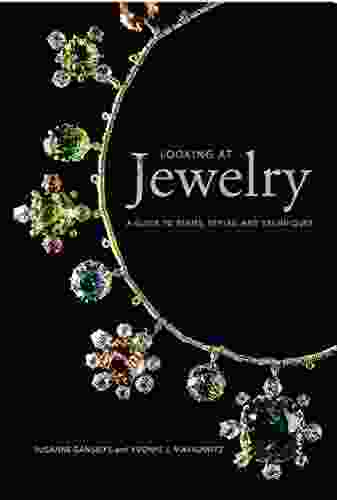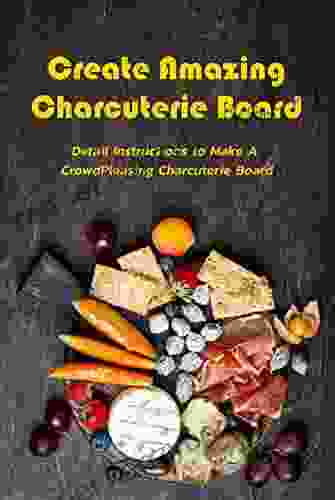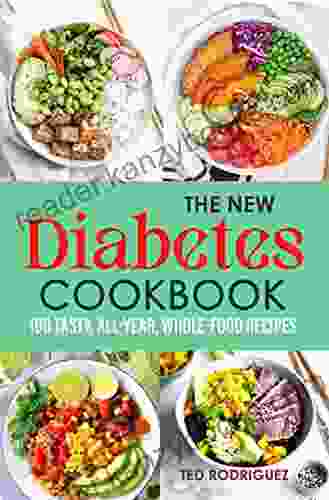Guide to Terms, Styles, and Techniques

This guide is a comprehensive reference to the language, styles, and techniques used in literature, writing, and communication. It is designed to help readers understand and use language effectively for a variety of purposes.
4.6 out of 5
| Language | : | English |
| File size | : | 24307 KB |
| Text-to-Speech | : | Enabled |
| Screen Reader | : | Supported |
| Enhanced typesetting | : | Enabled |
| Print length | : | 134 pages |
The guide is divided into three sections:
- Terms: This section provides definitions of key terms used in literature, writing, and communication.
- Styles: This section discusses different styles of writing, including fiction, non-fiction, poetry, and drama.
- Techniques: This section provides guidance on how to use different writing techniques, such as plot, character development, and point of view.
The guide is a valuable resource for students, writers, and communicators of all levels. It can help readers improve their understanding of language and use it more effectively for a variety of purposes.
Terms
The following is a list of key terms used in literature, writing, and communication:
- Allegory: A story that has a deeper meaning than its surface meaning.
- Alliteration: The repetition of the same initial sound in a series of words.
- Analogy: A comparison between two things that are similar in some way.
- Assonance: The repetition of the same vowel sound in a series of words.
- Connotation: The emotional or associative meaning of a word.
- Denotation: The literal or dictionary meaning of a word.
- Emotive language: Language that is designed to evoke an emotional response from the reader.
- Euphemism: A polite or indirect way of saying something that is considered unpleasant or taboo.
- Figure of speech: A word or group of words that is used in a non-literal way to create a specific effect.
- Imagery: The use of language to create a vivid mental image in the reader's mind.
- Metaphor: A figure of speech that compares two things that are not literally alike.
- Motif: A recurring image, idea, or theme in a work of literature.
- Oxymoron: A figure of speech that combines two contradictory terms.
- Paradox: A statement that seems contradictory but is actually true.
- Personification: A figure of speech that gives human qualities to non-human things.
- Rhetoric: The art of using language effectively to persuade or inform.
- Simile: A figure of speech that compares two things using the words "like" or "as."
- Symbol: A person, place, thing, or event that represents something else.
- Syntax: The way that words are arranged in a sentence.
- Theme: The central idea or message of a work of literature.
- Tone: The author's attitude towards the subject matter of a work of literature.
Styles
The following are some of the most common styles of writing:
- Fiction: Fiction is a type of writing that tells a story about imaginary characters and events.
- Non-fiction: Non-fiction is a type of writing that presents facts and information about real people, places, and events.
- Poetry: Poetry is a type of writing that uses language in a creative and expressive way to evoke emotions and ideas.
- Drama: Drama is a type of writing that tells a story through dialogue and action.
Each style of writing has its own unique set of conventions and techniques. For example, fiction often uses plot, character development, and setting to create a compelling story. Non-fiction often uses research and evidence to support its claims. Poetry often uses imagery, metaphor, and symbolism to create a vivid and evocative experience for the reader. Drama often uses dialogue and action to create a sense of immediacy and suspense.
Techniques
The following are some of the most common writing techniques:
- Plot: The sequence of events in a story.
- Character development: The process of creating and developing characters that are believable and relatable.
- Setting: The time and place in which a story takes place.
- Point of view: The perspective from which a story is told.
- Dialogue: The conversation between characters in a story.
- Description: The use of language to create a vivid mental image in the reader's mind.
- Exposition: The use of language to explain or inform the reader about something.
- Argumentation: The use of language to make a case for a particular point of view.
- Persuasion: The use of language to convince the reader to adopt a particular point of view.
li>Action: The events that occur in a story.
These techniques can be used to create a variety of different effects in writing. For example, plot can be used to create suspense and excitement. Character development can be used to create empathy and understanding. Setting can be used to create a sense of atmosphere and mood. Point of view can be used to control the reader's perspective on the story. Dialogue can be used to create a sense of immediacy and intimacy. Action can be used to create a sense of excitement and conflict. Description can be used to create a vivid and evocative experience for the reader. Exposition can be used to explain or inform the reader about something. Argumentation can be used to make a case for a particular point of view. Persuasion can be used to convince the reader to adopt a particular point of view.
This guide is just a brief overview of the terms, styles, and techniques used in literature, writing, and communication. For more information, please consult a more comprehensive reference work.
I hope this guide has been helpful. Please let me know if you have any questions.
Sincerely,
The Author
4.6 out of 5
| Language | : | English |
| File size | : | 24307 KB |
| Text-to-Speech | : | Enabled |
| Screen Reader | : | Supported |
| Enhanced typesetting | : | Enabled |
| Print length | : | 134 pages |
Do you want to contribute by writing guest posts on this blog?
Please contact us and send us a resume of previous articles that you have written.
 Book
Book Novel
Novel Page
Page Chapter
Chapter Text
Text Story
Story Genre
Genre Reader
Reader Library
Library Paperback
Paperback E-book
E-book Magazine
Magazine Newspaper
Newspaper Paragraph
Paragraph Sentence
Sentence Bookmark
Bookmark Shelf
Shelf Glossary
Glossary Bibliography
Bibliography Foreword
Foreword Preface
Preface Synopsis
Synopsis Annotation
Annotation Footnote
Footnote Manuscript
Manuscript Scroll
Scroll Codex
Codex Tome
Tome Bestseller
Bestseller Classics
Classics Library card
Library card Narrative
Narrative Biography
Biography Autobiography
Autobiography Memoir
Memoir Reference
Reference Encyclopedia
Encyclopedia Kwame Alexander
Kwame Alexander Kurt Beecher Dammeier
Kurt Beecher Dammeier Lara Lyn Carter
Lara Lyn Carter L Rochelle
L Rochelle Ziggy Marley
Ziggy Marley Kit Shan Li
Kit Shan Li Nina Brown
Nina Brown Kristen Remenar
Kristen Remenar Lars Bo Christensen
Lars Bo Christensen Laura Gehl
Laura Gehl Kristin Diversi
Kristin Diversi Laura Findley Evans
Laura Findley Evans L C Jino
L C Jino Lars Lundqvist
Lars Lundqvist Kristi Patrice Carter J D
Kristi Patrice Carter J D Nick Butterworth
Nick Butterworth Kristie Anne Mah
Kristie Anne Mah Landmark Publications
Landmark Publications Tom Douglas
Tom Douglas Robert F Moss
Robert F Moss
Light bulbAdvertise smarter! Our strategic ad space ensures maximum exposure. Reserve your spot today!

 Leslie CarterUnlock Culinary Freedom: Over 150 Quick, Easy, and Delicious Gluten-Free,...
Leslie CarterUnlock Culinary Freedom: Over 150 Quick, Easy, and Delicious Gluten-Free,...
 Arthur C. ClarkeImprove Insomnia and Concentration: The Ultimate Guide to Restful Nights and...
Arthur C. ClarkeImprove Insomnia and Concentration: The Ultimate Guide to Restful Nights and...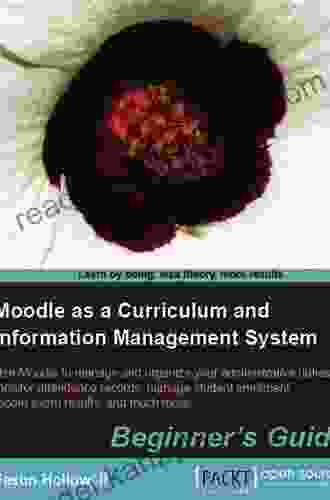
 Terry PratchettUnlock the Educational Potential of Moodle: A Comprehensive Guide to Using...
Terry PratchettUnlock the Educational Potential of Moodle: A Comprehensive Guide to Using... Christian BarnesFollow ·8.2k
Christian BarnesFollow ·8.2k Galen PowellFollow ·8.2k
Galen PowellFollow ·8.2k Jean BlairFollow ·8.2k
Jean BlairFollow ·8.2k Will WardFollow ·9.3k
Will WardFollow ·9.3k Federico García LorcaFollow ·16.6k
Federico García LorcaFollow ·16.6k Juan ButlerFollow ·14.6k
Juan ButlerFollow ·14.6k Quincy WardFollow ·19.8k
Quincy WardFollow ·19.8k Jamison CoxFollow ·16.5k
Jamison CoxFollow ·16.5k

 Lord Byron
Lord ByronUnveiling the Heart-Mind Connection: A Comprehensive...
In the realm of...

 Emilio Cox
Emilio CoxThe Dukan Diet Recipe Bible: Your Essential Guide to...
Are you ready to embark on a transformative...

 Marvin Hayes
Marvin HayesAn Introduction to Modern Minoan Paganism: Embrace the...
Unearthing the Enigmatic Past ...
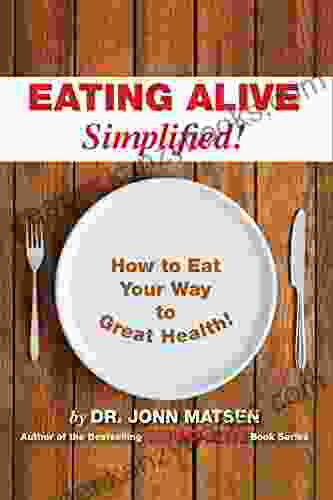
 Marc Foster
Marc FosterHow to Eat Your Way to Great Health: Unlock the Secrets...
In today's fast-paced world, it can be...

 Branson Carter
Branson CarterPlant-Based Paradise: Unlock Optimum Health and Weight...
In an era where chronic health conditions...
4.6 out of 5
| Language | : | English |
| File size | : | 24307 KB |
| Text-to-Speech | : | Enabled |
| Screen Reader | : | Supported |
| Enhanced typesetting | : | Enabled |
| Print length | : | 134 pages |


